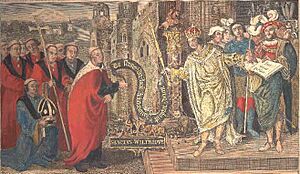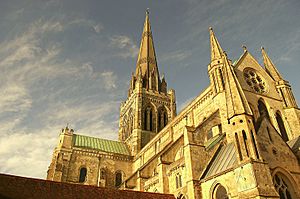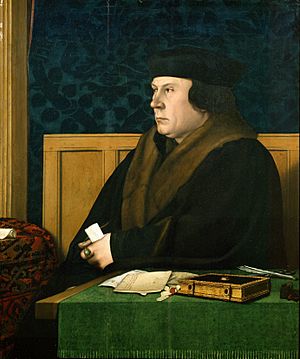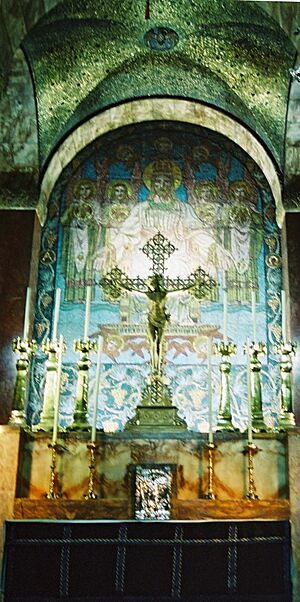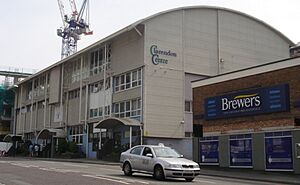History of Christianity in Sussex facts for kids
The history of Christianity in Sussex covers how the Christian faith came to and grew in the area we now call Sussex. Today, Christianity is the most common religion in Sussex.
Contents
Early History of Christianity in Sussex
After the Romans took over Britain in AD 43, the local Celtic people in Sussex started to adopt Roman ways.
The first time Christianity in Britain was written about was in the 200s AD. A Christian writer named Tertullian said that Christianity could "even be found in Britain." Later, Emperor Constantine made Christianity officially allowed in AD 313. Then, under Emperor Theodosius "the Great" (AD 378–395), Christianity became the official religion of the Roman Empire.
When the Romans left, Christianity probably only stayed strong in towns. At Wiggonholt, a large lead tank with Christian symbols was found in 1943. This is the only Roman-era item in Sussex clearly linked to Christianity. It might have been a baptismal font or a container for holy water.
Medieval Christianity in Sussex
Saxon Times
After the Roman army left, the Saxons arrived in the 400s. They founded the Kingdom of Sussex and brought their own religions, which had many gods. This likely slowed down the spread of Christianity. According to a historian named Bede, Sussex was the last main Anglo-Saxon kingdom to become Christian.
Æðelwealh became Sussex's first Christian king. He married Eafe, who was the daughter of the Christian king of Mercia. In 681, Wilfrid, an exiled bishop, came to Selsey. He is known for bringing Christianity to the people of Sussex and starting the church there. King Æðelwealh gave land to Wilfrid, where Selsey Abbey was built. This was the first main church for the Sussex area. Later, in 1075, the Normans moved the main church to Chichester Cathedral.
It's thought that Sussex wasn't completely non-Christian when Wilfrid arrived. King Æðelwealh had already been baptized. Also, a South Saxon named Damianus became a bishop in Kent in the 650s. This might mean some missionary work happened earlier. There was also a small monastery at Bosham with Irish monks. Wilfrid supported Roman Christian customs, and these were adopted in Sussex, not the Celtic customs from Scotland and Ireland.
Soon after Æðelwealh gave land to Wilfrid, Cædwalla of Wessex killed Æðelwealh and took over Sussex. Christianity in Sussex then came under the control of the diocese of Winchester. It wasn't until about 715 that Eadberht, the Abbot of Selsey, became the first bishop of the South Saxons.
Many local saints lived in Sussex during this time. St Lewinna lived near Seaford in the 600s. Lyminster is said to be the burial place of St Cuthflæd. In the late 600s or early 700s, St. Cuthman, a shepherd, traveled with his disabled mother in a one-wheeled cart. He stopped at Steyning after seeing a vision and built a church there. Cuthman became a saint, and his church was a pilgrimage site in the 900s and 1000s.
Bede also wrote that in 681, a plague hit England, including Sussex. Monks at Selsey Abbey prayed for three days for it to end. A young boy with the plague prayed to St Oswald. He then had a vision of St Peter and St Paul, who told him he would be the last to die from the plague.
The church at Steyning was one of about 50 "minster" churches in Sussex. These churches sent traveling priests to nearby areas. Other examples were at Singleton, Lyminster, Findon and Bishopstone. It took 200–300 years after Sussex became Christian for a network of local parish churches to exist.
Several monasteries were built in Sussex during the Saxon period. These included Selsey Abbey, Lyminster Priory, and others in places like Bosham and Chichester.
Norman and Angevin Times
After the Norman Conquest in 1066, the English bishops were changed in 1070. The Anglo-Saxon Bishop of Selsey was replaced by Stigand, who was William the Conqueror's personal chaplain. In 1075, the main church for Sussex was moved from Selsey to Chichester. This happened because a church meeting decided that main churches should be in cities, not small villages.
Battle Abbey was finished in 1094. It was built on the site of the Battle of Hastings. Pope Alexander II had ordered the Normans to do something good to make up for killing so many people during their conquest. Many new monasteries during this time were started by the new Norman lords in Sussex.
Bishop Ralph Luffa is known for starting the building of the current Chichester Cathedral. The first church built by Stigand was mostly destroyed by fire in 1114.
During the medieval period, the church also set up hospitals and schools in Sussex. These included St Mary's Hospital in Chichester and the Prebendal School near Chichester Cathedral.
The areas managed by archdeacons, called archdeaconries, were created in the 1100s for Chichester and Lewes.
Sussex had strong connections with the Knights Templar and the Knights Hospitaller. They had sites in places like Shipley and Poling.
In the 1200s, Richard of Chichester became a saint. His shrine at Chichester Cathedral became an important place for pilgrimage (religious journeys). St Richard later became the patron saint of Sussex.
In 1450, Adam Moleyns was the only Bishop of Chichester to be killed. He was beaten to death by angry soldiers in Portsmouth who were waiting for their pay.
There isn't much evidence of Lollardy (an early Protestant movement) in Sussex in the 1400s. Only one person, Thomas Bageley, was burned for being a Lollard. Some historians think small groups of Lollards existed in the High Weald area for over a century.
Early Modern Christianity in Sussex
During this time, Sussex was a bit unusual. It was a southern county but had religious patterns more like those in the north. It was also connected to Europe as much as to the rest of England. Rye was probably the most Protestant town in Sussex.
The Reformation
Just like in the rest of England, the Church of England separated from the Roman Catholic Church during the reign of King Henry VIII. In 1535, the king appointed Sir Thomas Cromwell to oversee the church. Cromwell visited Sussex to count churches and monasteries. This was to help tax church property more easily.
The next year, a law was passed to close monasteries that earned less than £200 a year. Then, larger monasteries "voluntarily" closed. Lewes Priory was one of the first in England to close this way in November 1537. The monks were given a small pension or a job as a priest. The land and possessions of Lewes Priory went to Thomas Cromwell, who gave them to his son.
In 1538, King Henry VIII ordered the destruction of the shrine of St Richard of Chichester in Chichester Cathedral. Thomas Cromwell said it was "a certain kind of idolatry."
Richard Sampson, the Bishop of Chichester, upset Cromwell and was put in the Tower of London in 1539. Sampson was released after Cromwell lost power and was executed in 1540. Sampson continued as bishop for two more years. He was followed by George Day. Day did not like the changes and was suspended as Bishop.
Henry VIII died in 1547. His son, Edward VI, continued his father's religious changes. However, Edward died after only six years.
The bishops of Chichester had not supported the Reformation until John Scory became bishop in 1552. During Henry VIII's reign, two church leaders in Chichester Cathedral were executed for opposing the Reformation. During Edward VI's reign, George Day was even imprisoned for his opposition.
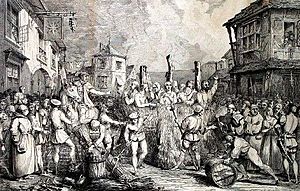
Mary I's Reign
After twenty years of religious changes, the Catholic Mary Tudor became Queen of England in 1553. Mary expected her clergy to be unmarried. So, Bishop Scory, who was married, decided to retire. George Day was released and became Bishop of Chichester again.
Mary's persecution of Protestants earned her the nickname "Bloody Mary." Across England, about 288 Protestants were burned at the stake during her reign. In Sussex, 41 people were executed, mostly in Lewes. The details of these executions were written down in the Book of Martyrs by John Foxe.
Some of the martyrs included Deryck Carver, a French-speaking man who came to Brighton to escape religious persecution. Another was Richard Woodman, an ironmaster from Buxted. Today, Sussex Bonfire Societies still remember the 17 Protestant martyrs burned in Lewes High Street. In Lewes, they have a procession of martyrs' crosses during the Bonfire Night celebration.
Sussex was close to Europe, so it was exposed to different Protestant ideas. It was also close to the Weald area, which had older Protestant beliefs. This was especially true in the east of the county, which had trade links to Protestant parts of northern Europe.
Elizabeth I's Reign
When Mary died in 1558, her Protestant sister Elizabeth I became queen. Elizabeth brought back the separation from Rome. She passed laws in 1559 that required clergy to take special oaths. Those who refused lost their jobs. In Sussex, nearly half the cathedral clergy and about 40% of parish clergy had to be replaced.
The Reformation as a strong religious movement might have only truly arrived in Sussex with Bishop Richard Curteys in 1570. In the west, Curteys' changes were difficult because of powerful Catholic families. In the east, more extreme forms of Protestantism were present. Curteys brought in new preachers to spread his ideas. This was especially strong in the Lewes area because of its trade links with Europe.
In the 1570s, Puritan Christian names like "Feregod" became common in the Weald. Towns like Rye and Lewes became "free-thinking" Protestant towns. The number of Protestants grew, and Huguenots (French Protestants) came seeking safety after the St Bartholomew's Day massacre in France. Some Puritan names given to children in East Sussex included "Be-courteous Cole" and "Fight-the-Good-Fight-of-Faith White." One child with a Puritan name, Accepted Frewen, later became Archbishop of York. Many Puritans from Sussex moved to New England in America.
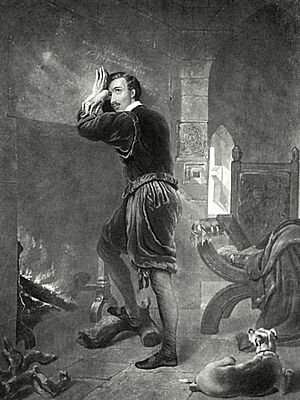
In the late 1500s, Sussex was a complex region. The countryside was largely Catholic, with powerful old Catholic families like the Howards at Arundel and the Gages at Firle. At the start of Elizabeth's reign, all six noble families in Sussex were Catholic. However, towns like Rye and Lewes were more Protestant.
Even after laws against Catholics were made stricter in the 1580s, Sussex continued to have Catholic leaders. The office of sheriff of Sussex was held by Catholics eleven times between 1558 and 1603.
At the end of Elizabeth's reign, Catholicism was still tolerated to some extent. After her husband died, Lady Montague moved to Battle Abbey. This became a center for the local Catholic community, with up to 120 people attending Mass. This shows that if Catholics remained loyal, they were often tolerated.
Catholic families in Sussex who were imprisoned or lost money were usually those involved in plots against Elizabeth. Fines for not attending an Anglican church increased greatly. In 1580, leading Sussex Catholics were imprisoned for refusing to attend Anglican services. In 1583, there was a plot to land Spanish, German, and Italian troops in Sussex. This showed that there was some truth to suspicions about Sussex Catholics.
New laws in the 1580s made it treason to hide priests. However, no Sussex gentry or noble family members were ever charged under these laws. There was also no uprising, even though there was a large Catholic community. West Grinstead Park, home of the Caryll family, became a secret Roman Catholic mission. Priests would arrive by boat up the River Adur. Thomas Pilchard was executed in 1587 for being a priest. In 1588, two Catholic priests, Ralph Crockett and Edward James, were arrested at Arundel Haven and executed near Chichester. Philip Howard, 20th Earl of Arundel, a Catholic, was imprisoned in the Tower of London for ten years and died there. He was later made a saint.
17th Century
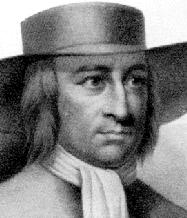
In the 1600s, the Chichester area had several bishops who held Arminian views, which were different from strict Puritan beliefs.
By the 1620s and 1630s, many communities had licensed preachers. Preaching spread to towns like Rye and Lewes, supported by local landowners. From this time, keeping Sunday holy became more important, with games and disorder being stopped. Bishop Montagu had strong views against Puritanism and emphasized church rituals.
There were no major battles in Sussex during the English Civil War (1642–1651). However, there were small sieges at Chichester and Arundel. The west of Sussex was generally loyal to the king, but Chichester supported Parliament. The east of the county also mostly supported Parliament. Some churches were damaged, especially in the Arundel area. After Chichester surrendered, the Cathedral was damaged by Parliament's troops. The Dean of Chichester Cathedral, Bruno Ryves, said the troops "defaced and mangled [the monuments] with their swords."
In 1643, Francis Bell, a priest at the Catholic mission in West Grinstead, was executed. The Caryll family, who were Catholic, were often persecuted and fined.
During the time when Oliver Cromwell ruled England, Rye was a strong Puritan town. However, people in Rye often ignored strict rules, especially about drinking.
Sussex Quakers and Emigration to America
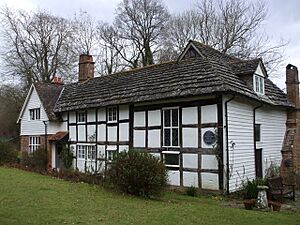
About a quarter of church leaders were forced out of their parishes and replaced with Puritans. Many people left traditional churches. In 1655, George Fox founded the Society of Friends (Quakers) at Horsham. Quakerism appeared in Sussex in the 1650s but was strongly put down by local leaders who worried about its revolutionary ideas. In 1656, Thomas Haycock of Horsham was the first person in Sussex jailed for his Quaker beliefs.
William Penn lived in Sussex for a while. In 1676, he bought an estate at Warminghurst, near Steyning. In 1677, a large open-air meeting of Quakers was held at Penn's home in Warminghurst, defying the law. Several hundred Quakers attended. Then, in 1681, King Charles II gave Penn land in what became Pennsylvania and Delaware in America. Among those Penn took to Pennsylvania were 200 people from Sussex. In 1682, Penn left England for Pennsylvania with about 100 passengers, mostly Quakers from Sussex. Quakers from Sussex who moved to Pennsylvania included Samuel Carpenter, who founded Horsham Township, Pennsylvania. In 1677, William Clayton left for Pennsylvania, where his family helped found a township they called Chichester. Penn also created Sussex County and renamed the settlement of Hoernkills as Lewes.
After a plot against the king in 1683, a new wave of religious persecution swept England. Until the Toleration Act 1688 was passed in 1689, Quakers in Sussex and elsewhere suffered greatly. Many were imprisoned in Horsham Jail. William Penn himself was persecuted for his Quaker faith while living at Warminghurst. The records show that Penn was called a "seditious person" for holding "unlawful" Quaker meetings at his home. Penn sold his estate in Warminghurst in 1707.
Quakers in Sussex debated with Matthew Caffyn, a Baptist preacher. In 1655, two Quakers argued with Caffyn about religious ideas. As a result, they wrote pamphlets against each other. In 1696, Caffyn's changing beliefs caused a split in the Baptist church. This was important for the development of Unitarianism.
The return of the English monarchy began in 1660 with King Charles II. It took over a year for Chichester Cathedral to get its choir back to full strength.
In the late 1600s, Sussex was a stronghold for a group called the General Baptists.
In 1678, a former Hastings church leader, Titus Oates, made up the "Popish Plot." This was a false story about a Catholic plan to kill King Charles II. The plot led to the false imprisonment and execution of William Howard. John Caryll from Sussex, a prominent Catholic, was imprisoned but later released on bail. After the persecutions that followed this plot, the death penalty for being a priest was removed. Instead, fines were doubled, and Catholics lost more civil rights. At this point, most Catholic families in Sussex started to attend the Anglican church, except for the Caryll family. In 1688, John Caryll went into exile in France with King James II.
Late Modern Christianity in Sussex
18th Century
There was a big drop in the number of non-conformists (Protestants who were not part of the Church of England) in Sussex in the early 1700s. Between 1676 and 1724, their numbers fell by at least a quarter. About a third of Sussex parishes had no non-conformists in 1724. For example, Horsham had over 100 non-conformists in 1676 but only 34 by 1724.
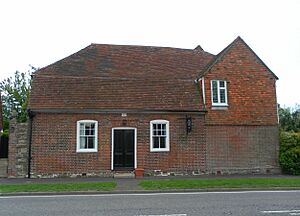
The total number of non-conformists in Sussex fell from 4,300 in 1676 to about 3,300 in 1724. In the 1700s, a Sussex grocer named Thomas Turner kept a diary that showed how much ordinary people knew about religious ideas. At this time, the Sussex Weald and nearby towns like Lewes had several strict religious groups. Cade Street Chapel in Heathfield was founded in 1769 for followers of George Gilbert, known as 'The Apostle of Sussex'. Gilbert preached in many villages, often facing difficulties. In Ticehurst, he was pelted with stones.
Under Matthew Caffyn's guidance, a Baptist chapel was founded in Horsham in 1719. Worshippers from across northern Sussex came to this chapel. Many were from the village of Billingshurst, and this group later became large enough to start their own chapel there.
John Wesley, a co-founder of the Methodist Church, preached in nearby Winchelsea in 1790. The Countess of Huntingdon's Connexion (another Methodist group) opened its first church in Brighton in 1761.

Sussex had a much larger proportion of Catholics than other southern counties. Between 1715 and 1720, 8% of Sussex's population was registered as Catholic. This was similar to counties further north. John Baptist Caryll, the last of the Caryll family, was punished for his Catholic faith. In 1754, he was forced to sell his Sussex homes, including the one at West Grinstead. He gave the Priest's House to the Catholic Church so that Catholic Mass could continue there. When Bishop Richard Challoner visited the West Grinstead Mission in 1741, he found 80 Catholics at Mass.
Finally, Maria Fitzherbert, a famous Catholic, secretly married the Prince of Wales (who later became King George IV) in 1785. The British laws did not accept this marriage. George IV later left her. The town of Brighton adopted her, and people, both Catholic and Protestant, called her "Mrs. Prince." She had a priest say Mass at her house and invited local Catholics.
19th Century
Roman Catholic Church
Brighton's Roman Catholic community was small in the late 1700s. But two things made it grow in the 1790s. Many refugees from the French Revolution settled in Brighton. Also, Maria Fitzherbert, a Catholic, began a relationship with the Prince Regent. She came with him whenever he visited Brighton and had her own house there.
The first Catholic place of worship in Brighton since the Reformation opened above a shop in 1798. In 1805, the priest, a French refugee, started raising money for a permanent building. A church was completed in 1807.
In 1818, the new priest wanted to make the church bigger. Mrs Fitzherbert gave £1,000 for this. But before anything could be done, Catholic emancipation was achieved in 1829. This encouraged Brighton's Catholics to build a new, larger church. Land was bought, and the new church of St John the Baptist was consecrated on 7 July 1835. It was only the fourth new church to be consecrated in England since the Reformation.
Founded in 1873, St. Hugh's Charterhouse, Parkminster is the first and only Carthusian monastery in the UK since the Reformation. In 1876, the Shrine Church of Our Lady of Consolation of West Grinstead was established. It was the first Catholic shrine dedicated to Mary in England since the Reformation. Sussex was covered by the new Roman Catholic diocese of Southwark, created in 1850.
Non-conformist Churches
Methodism in Sussex coastal towns had an unusual start. Methodists in the army were often the main founders of Methodist groups in towns from Chichester to Bexhill. It wasn't until 1803 that Methodist soldiers were allowed to worship freely on Sundays. In 1805, the Jireh Chapel opened in Lewes for a Calvinist preacher named William Huntington.
The Baptist churches at Billingshurst, Ditchling, and Horsham slowly changed their beliefs towards Unitarianism in the early 1800s.

In the mid-1800s, John Sirgood founded the Society of Dependants at Loxwood in northern Sussex. Nicknamed the 'Cokelers', they believed people could choose to be saved, which was different from the idea of predestination. They first settled at Loxwood because it was outside the control of large estates whose Anglican owners might have stopped them. The Society of Dependants also built churches in Chichester, Hove, and other places.
1851 Census
In 1851, a census of places of worship was taken in England and Wales. The numbers for Sussex showed there were more Anglican churches than non-conformist ones. In nearby counties like Hampshire and Kent, there were more non-conformist places.
| Sussex Places of Worship 1851 Based on figures from the Census of Great Britain 1851. Religious Worship. |
||
| Denomination | Places of Worship | |
|---|---|---|
| Church of England | 350 | |
| Independents | 78 | |
| Baptists | 40 | |
| Society of Friends | 5 | |
| Unitarians | 5 | |
| Methodists | 75 | |
| Isolated Congregations* | 32 | |
| Roman Catholics | 8 | |
| Catholic and Apostolic | 1 | |
| Latter Day Saints | 2 | |
| Jewish | 1 | |
| * Isolated Congregations are independent groups not belonging to a specific sect. | ||
The 1851 census showed that the Anglican church was very strong in western Sussex. These were areas with small parishes. Thakeham had the second highest rate of Anglicans in England (96%). Anglican churches also did well in coastal towns like Brighton. In parts of the Sussex Weald, the Anglican church had fewer buildings but still good attendance.
Just over 40% of the places of worship in Sussex in 1851 were non-conformist. These were mainly Independents, Wesleyan Methodists, and Baptists. There were also smaller groups of Catholics, Quakers, and Unitarians. Non-conformist chapels did well, especially in the Weald.
Older non-conformist groups like Baptists, Unitarians, and Quakers remained more popular than newer ones. They were especially strong in the Weald, on the Downs, and in towns like Brighton and Hastings. Overall, Wesleyan Methodism had some of the fewest followers in Sussex compared to the rest of England.
Anglo-Catholic Reform and Protest
In the mid-1800s, a preacher named Frederick William Robertson became well-known and preached at the Holy Trinity Church, Brighton.
The idea of remembering the Sussex martyrs grew in the 1800s. This happened when the Catholic church was becoming more organized in England again. It was also boosted by more Irish Catholics moving in and by members of the Oxford Movement converting to Catholicism. Mark Antony Lower, a schoolmaster from Lewes who was against Catholics, started the "cult of the Sussex martyrs." He wrote a book in 1851 to remind people of the harsh actions of Catholicism in Sussex.
Hostility towards the Roman Catholic church had almost disappeared by the early 1800s. But this began to change with the Evangelical Revival. The first Methodists in Lewes were Calvinist Methodists. They saw the world as a clear fight between good and evil. Catholics became the target of their negative feelings. More petitions against Catholic rights came from Lewes than any other town in southern England. These came from the new Calvinist groups, not the older non-conformists who supported tolerance.
In the mid-1800s, people started burning an effigy of Pope Paul V at the Lewes Bonfire celebrations. Paul V was pope during the Gunpowder Plot in 1605. He was not responsible for the plot or for the persecution of Protestants under Mary I. In 1893, a church leader in Lewes gave sermons before November 5th, warning about the dangers of Catholicism. Many attendees were part of a new group called the Orange Lodge in Lewes.
At the end of the 1800s and beginning of the 1900s, memorials were put up across Sussex to honor people burned for their beliefs. These were reminders of religious divisions from centuries earlier. These actions were seen as anti-Catholic. While some supporters didn't want to offend Catholics, a memorial in Heathfield read "burnt to death at Lewes by the Roman Catholics." These monuments did not remember Catholic martyrs. Anger was directed more at the Anglo-Catholic community (a group within the Anglican church) than at Roman Catholics.
In the Anglican church in the 1800s, the role of rituals became a big debate. In Brighton, the Anglican church was strongly influenced by the Oxford Movement. Brighton became known for its Anglo-Catholicism. Anglo-Catholic priests in Brighton included Henry Michell Wagner. There was a strong Protestant reaction, including a riot in 1880. Other churches in Hastings and Worthing also adopted these rituals. Various militant Protestant groups formed branches across the county.
In 1884, riots happened in Worthing, Eastbourne, and Shoreham. Mobs, including members of the Skeleton Army, reacted to criticism from the Salvation Army.
Contemporary Christianity
Church of England
In the Church of England in Sussex, the way the Chichester diocese (which covers the county) was managed changed in 1912. A third archdeaconry, for Hastings, was created. This structure stayed until 1975 when the archdeaconries were reorganized. The Hastings archdeaconry was merged back into Lewes, which was renamed Lewes and Hastings. A new archdeaconry was created in northern Sussex for Horsham. This structure changed again in 2014.
On 16 November 2001, Pat Sinton became the first woman priest ordained in Sussex. She was ordained by John Hind, the Bishop of Chichester. The previous bishop had not allowed women priests in the diocese. In September 2014, Fiona Windsor became the Archdeacon of Horsham, making her the first female archdeacon in Sussex.
Roman Catholic Church
In 1900, the Roman Catholic nun Maude Petre became friends with the Jesuit priest George Tyrell. Petre built a cottage for Tyrell in her garden. Both Petre and Tyrell were important figures in a debate within the Catholic Church about modern ideas in the early 1900s. The Roman Catholic Diocese of Arundel and Brighton was formed in 1965 from part of the diocese of Southwark. It includes Sussex and Surrey.
Relations with Sussex Churches
George Bell, who became Bishop of Chichester in 1929, strongly supported the German resistance against Nazism. He also helped start the Ecumenical Movement, which aimed for churches to work together more. Bell set up the first County Council of Churches in Sussex in 1955.
There is a history of religious conflict around the bonfire celebrations in Lewes. In the 1930s, the mayor of Lewes asked for "no popery" banners to be removed and for the burning of Pope Paul V effigies to stop. In the 1950s, a bonfire society was banned for refusing to stop carrying anti-Catholic banners. In Lewes, women played a big role in using the spirit of working together to build bridges between different Christian groups.
In 1984, church leaders from Sussex were invited to Lewes to discuss Protestant-Catholic relations. Attendees included the Bishop of Chichester, the Bishop of Lewes, and the Bishop of Arundel and Brighton, as well as leaders from Baptist, Methodist, and United Reformed churches. After the meeting, the leaders walked to the Martyrs' memorial and prayed for peace. The owners of the memorial later threatened them for trespassing. The BBC was persuaded to make a Songs of Praise TV program in Lewes about religious tolerance, broadcast on 5 November 1989.
For many people, the bonfire celebrations have lost much of their religious meaning. Many Catholics now take part. In 1981, Ian Paisley, a Northern Irish politician, visited Lewes on Bonfire Night and tried to stir up conflict by handing out anti-Catholic leaflets. His actions backfired, and the next year, he was burned in effigy. Today, strong anti-Catholic feelings are rare in Lewes.
In the 2000s, controversy still surrounds the Bonfire societies and what "tradition" means versus "bigotry." For example, burning an effigy of Pope Paul V was called "a scandalous piece of stone-cold bigotry" in 2012.
Other Christian Denominations
The Anabaptist Bruderhof community was founded near Robertsbridge in 1971. It is the oldest such community still in Europe. Since the 1980s, Sussex has three Greek Orthodox churches in Brighton, Hastings, and Eastbourne.
After the Second Sudanese Civil War, many refugees came to Brighton and Hove. Hove and Worthing now have Coptic Orthodox Churches. These churches were visited in 2017 by Pope Tawadros II of Alexandria. In 1998, the church at Jireh Chapel in Lewes decided to join the Free Presbyterian Church of Ulster.
In 2012, Jerome Lloyd was made Archbishop of Selsey in the Old Roman Catholic Church in Europe. The archbishop works on projects to help homeless people in Brighton.
The early 2000s saw the rise of large churches, sometimes called mega-churches, and new evangelical churches. Examples include Kingdom Faith in Horsham and the Newfrontiers group.
|
See also


